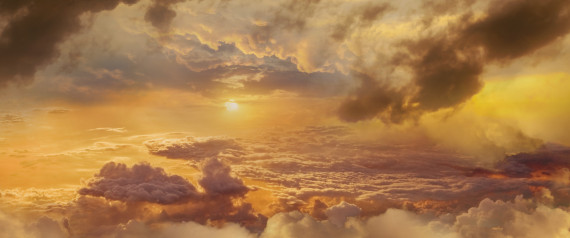
Climate change may be far worse than scientists thought, causing global temperatures to rise by at least 4 degrees Celsius by 2100, or about 7.2 degrees Fahrenheit, according to a new study.
The study, published in the journal Nature[1] , takes a fresh look at clouds' effect on the planet, according to a report by The Guardian[2] . The research found that as the planet heats, fewer sunlight-reflecting clouds form, causing temperatures to rise further in an upward spiral.
That number is double what many governments agree is the threshold for dangerous warming[3] . Aside from dramatic environmental shifts like melting sea ice[4] , many of the ills of the modern world -- starvation, poverty, war and disease[5] -- are likely to get worse as the planet warms.
"4C would likely be catastrophic rather than simply dangerous," lead researcher Steven Sherwood[6] told the Guardian. "For example, it would make life difficult, if not impossible, in much of the tropics, and would guarantee the eventual melting of the Greenland ice sheet and some of the Antarctic ice sheet."
Another report released earlier this month said the abrupt changes caused by rapid warming should be cause for concern, as many of climate change's biggest threats[7] are those we aren't ready for.
In September, the Intergovernmental Panel on Climate Change said it was "extremely likely"[8] that human activity was the dominant cause of global warming, or about 95 percent certain -- often the gold standard in scientific accuracy[9] .
"If this isn't an alarm bell, then I don't know what one is. If ever there were an issue that demanded greater cooperation, partnership, and committed diplomacy, this is it," U.S. Secretary of State John Kerry said after the IPCC report was released.
Also on HuffPost:
References
- ^ published in the journal Nature (www.nature.com)
- ^ a report by The Guardian (www.theguardian.com)
- ^ the threshold for dangerous warming (unfccc.int)
- ^ melting sea ice (www.huffingtonpost.com)
- ^ starvation, poverty, war and disease (www.huffingtonpost.com)
- ^ Steven Sherwood (www.ccrc.unsw.edu.au)
- ^ climate change's biggest threats (www.huffingtonpost.com)
- ^ it was "extremely likely" (www.huffingtonpost.com)
- ^ gold standard in scientific accuracy (www.huffingtonpost.com)
- ^ Send us a tip (www.huffingtonpost.com)
- ^ Send us a photo or video (www.huffingtonpost.com)
- ^ Suggest a correction (www.huffingtonpost.com)

0 comments:
Post a Comment